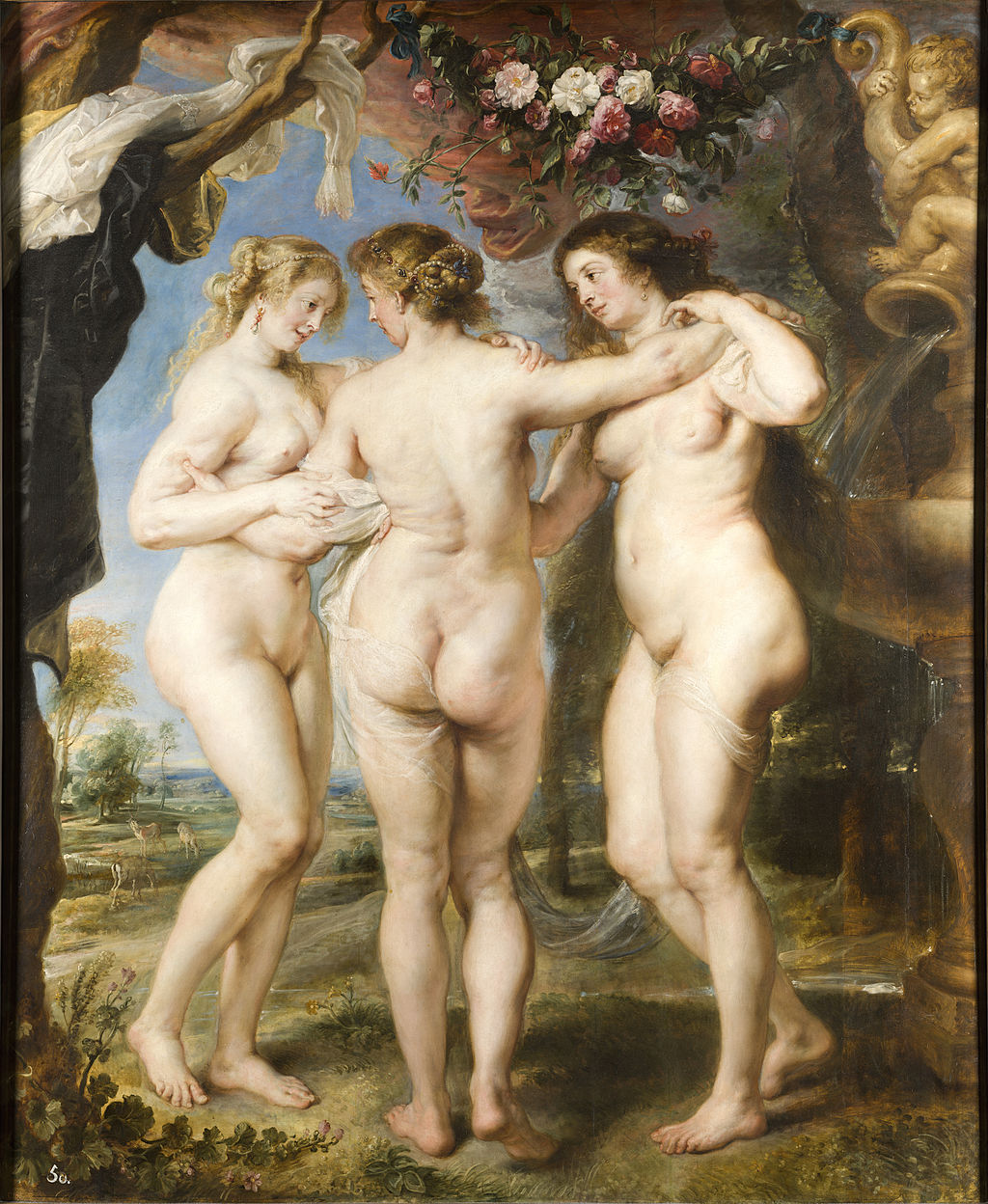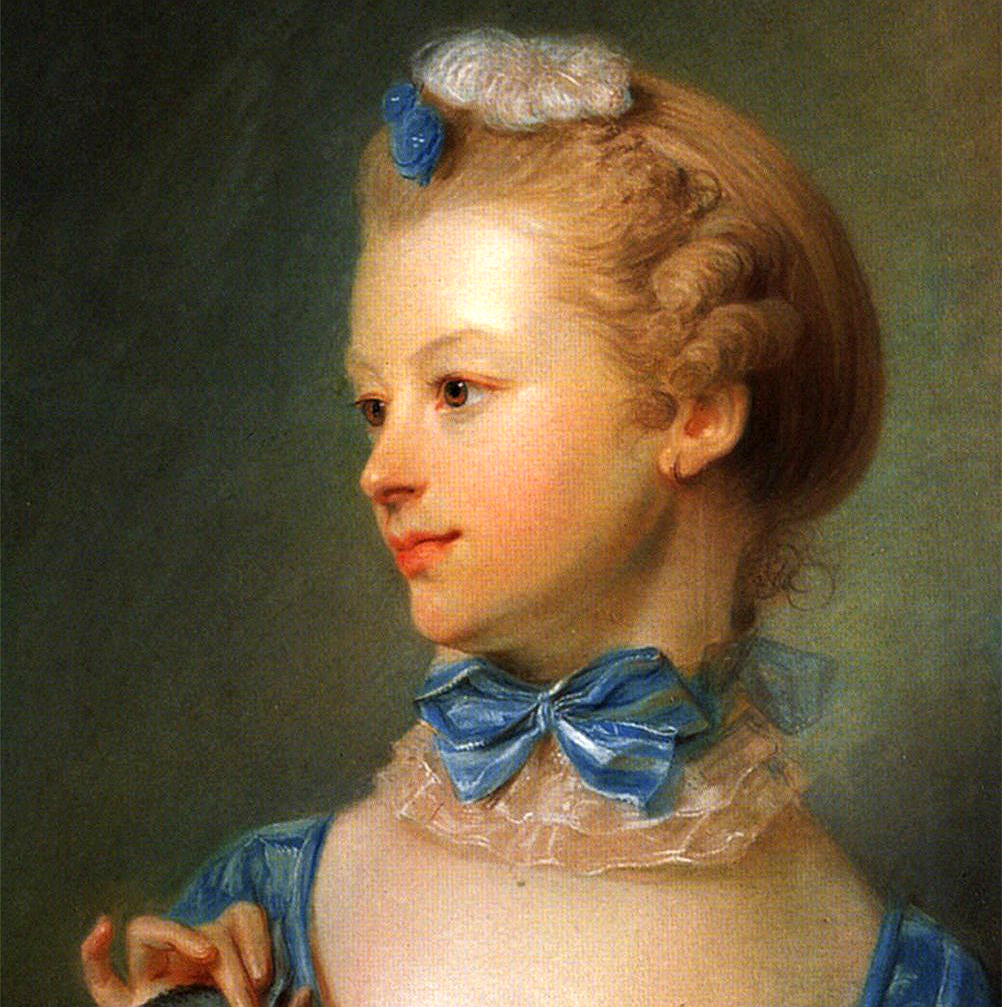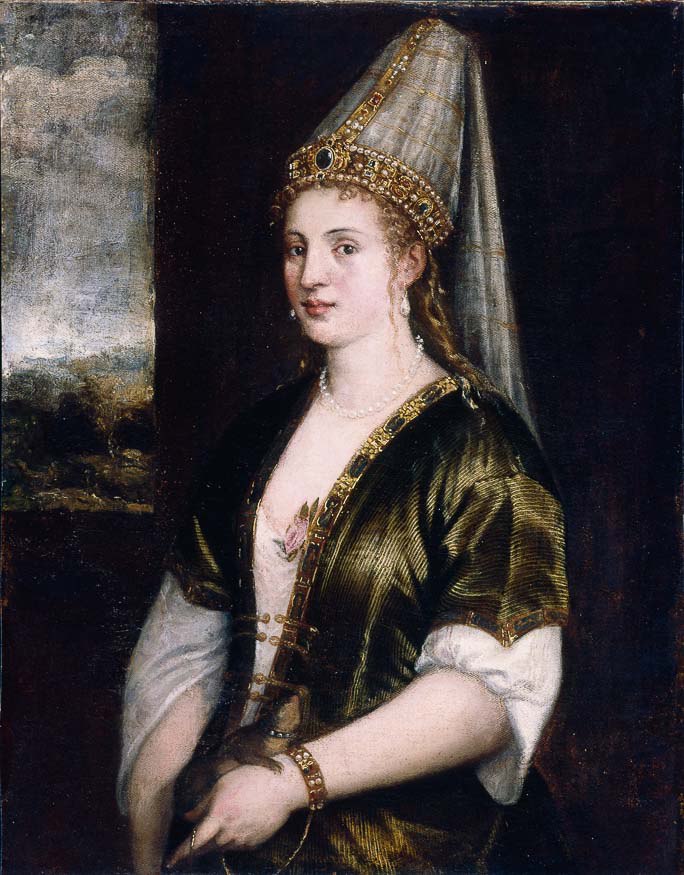Mirror, mirror, am I pretty? – Beauty standards throughout history: Modern Times -
MIRROR, MIRROR, AM I PRETTY?
– Beauty standards throughout history: Modern Times -
On today’s part, we’ll be focused more on the aspects
that suggested beauty in Western Europe during the Modern Era. The reason for
this is because there is very little information about Asia.
Their beauty standards persisted from Ancient Times,
having occurred a few changes. That is because while Europe evolved quickly,
Asia was left behind and untouched by the progress of the Occident. The ways
information reached were being blocked by the expansion of the Ottoman Empire
during the XV and XVI century.
Europeans began looking for new ways to practice trade
for different plants and this led to the discovery of America. The trade with
America, so, began more productive, costing efficiently less money and was less
dangerous. However, this land ended up being conquered by the big empires and
transformed into colonies (whose resources had been exploited).
So, the Eastern land was left at the medieval level of
the XII century, an ancient level for humanity. That states maintained that
level of civilization for a long period, feudal structures being held even up
to the second half of the XIX century. (in 1868 – Japan undergoes a series of
major reforms that resulted in the quickly economic and social growth while
still maintaining traditions).
A) The Middle Age
Historically speaking, the Middle Age is the period
that lasted from the fall of Rome (476 AD) up to the fall of Constantinople
(1453). However, there were plenty of events that suggested the end of this
time, as the every-day life had begun to change radically. For me, The Middle
Ages lasted from the 5th century up to the Renaissance (14-15 century).
The Middle Ages was a highly Christianized period, in
which the Church had a prime role in people’s life. All the texts and most
evidence that dates back to this time had the Church behind. At that time, the
Church had too much control, as almost all the academic men were part of the
ranks of the Church or learned in a catholic institute (and all schools were
catholic so that’s that).
Still, there is little information about beauty
standards for both men and women. Of course, there is, as always, a lot more
information on females, but we know that a man, to be viewed as handsome, had
to look athletic. This may be a prime effect that one of the main games the
medieval people engaged in was joust (a tournament between knights). However,
he also had to look healthy and not have any uncommon body parts. Long hair,
pale skin and a bit of slenderness were also eye-pleasing. Moreover, men were
said to be the most handsome during their 30s.
However, women had more standards to achieve to look
beautiful. The hair, especially long hair, was believed to be one of the most
attractive parts of the female body. For this reason, married women covered
their hair (to not create unholy thoughts in other men's minds).


Isabella of France, Queen consort of England
As I said, religion played an important role in the
day-to-day life of the medieval people. Women’s clothing covered most of their
skin, but there were still body parts exposed, such as cleavage, ankles or
wrists. If the skin was fair, there were even more desirable. Like in Ancient
China, this was a sign of upper-status, indicating a woman who didn’t work the
land every day. They appreciated a long, symmetrical slender figure. Another
common practice was the shaving of eyebrows to ensure higher foreheads.
(However, during the Renaissance, shaved eyebrows were the signs of a
prostitute).
B) The Vikings (200-900AD)
The Vikings are unlikely any other people from their
time. They didn’t make distinctions between male and female beauty, using the
same words for it. They talked about without any erotic overtones add to it.
They washed regularly, keeping themselves clean and tidy. After archeological
diggings, there were found many hygiene objects, such as metal toothpicks and
ear spoons. They bathed once a week and changed their clothes frequently. The
Viking men were proud of their beauty, adorning themselves with jewelry and
bright-colored clothes. Women were said to be appreciated for having bright,
long hair and fair skin.

C) The Renaissance
 The Renaissance was the period between the 1400s and
1600s. Its first movements appeared in Florence, Italy, before spreading
throughout Europe. It is an era that valued art and culture beyond measure and
represents the return to the roman and Greek ideals.
The Renaissance was the period between the 1400s and
1600s. Its first movements appeared in Florence, Italy, before spreading
throughout Europe. It is an era that valued art and culture beyond measure and
represents the return to the roman and Greek ideals.
The female body was seen as a way to reflect the
husband’s status and wealth. That’s why prized women were voluptuous with an
ample bosom and rounded stomach. They appreciated fair smooth skin. This was a
sign of health and youth. To achieve this look, they used creams based on olive
oils and powders made of mercury and sulfur. The latter turned out to be highly
poisonous, and many women died intoxicated. Peter Paul Rubens is commonly known
for depicting this body type in his paintings, that’s why this body shape is
also called a Rubensian form.
Regarding the facial features, the ideal face had
delicate features. Curly hair, a small mouth, a well-defined nose, large eyes,
and thin eyebrows were to wish for. A high forehead was also in fashion. To get
this aspect, many women plucked their hairlines even up to the crown of the
head. However, if you didn’t want to pluck the hair one by one, you could also
use a mixture of poultices of vinegar and cat dung or quick-lime. This removed
the hair along with some skin. In this time, plucking eyebrows and darkening
them with lead pencils became a trend.
Belladonna, a poisonous herb, was responsible for the
blindness of many women. Putting drops of it into the eyes created the
sparkling and wide eyes effect, but also damaged the vision.
The desired hair color was strawberry blonde. Many
women used to bleach their hair to achieve this color. After applying the
bleaching products, they got outside in the sun. To avoid getting their skin
tanned or getting freckled, they wore a hat that covered their faces leaving
only the hair in the sun. This is called a Venetian Hat.


Lucrezia Borgia, one of the most beautiful Italian women
D) The Elizabeth Era (1558 - 1603)
The beauty during the Elizabethan era can be
understood by analyzing a portrait of Queen Elizabeth I. She was one of the
greatest English monarchs and her reign was a deeply prosperous time. It often
bears the name of the Golden Age.


People were very pleased with their Queen, so it’s only normal that women wanted to embody parts of her appearance. The white, fair complexion was a trend in that time, but, unfortunately, only wealthy women could achieve it. Many women used very poisonous creams and powders, made of white lead and vinegar, but also ash and Sulphur. To hide wrinkles females used white eggs. Rogue lips and cheeks were also pretty popular.
It is known that Queen Elizabeth I used mercury to
clean her face. Her habit of painting her face white only began after she
survived smallpox, having her face bruised. The creams, as mentioned highly
poisonous, had extremely damaged her face. With time, the layers applied
increased. In her final years, her face was so sore and damaged that make-up
was removed only once a week with mercury. She was buried with a tone of
make-up on to hide the horrible reality.
People appreciated a high forehead. The hairline was
plunked. Arch eyebrows also created that effect. As Queen Elizabeth had reddish
hair, many women used bleaching products to obtain the right color. They mostly
used saffron, cumin seeds, and even urine. The hair was curled tightly in the
front and adorned with jewels (mostly pearls). Also, in this period, one of the
first forms of corset was invented – a long, narrow one, meant to create the
effect of a slender body, not accentuate the waist.
E) Ottoman Empire (after the conquest of Constantinople: 1453-1924)
 It is a known fact that, in the Ottoman Empire, the
harems had the most beautiful women. It was only normal that the Sultan, the
ruler of the vast empire, to have the most stunning women in the world. The
harems held up many women of different nations, but the Circassian women (a
nation in the North Caucasus - on the map with green) were said to be the ones that caught the eyes
regularly. Many of them became very influential in the political life of the
Empire, being Valide Sultans (mother of the Sultan) or Haseki Sultans (wife of
the Sultan) - or both-, such as Hümaşah Haseki Sultan, Hatice Muazzez Haseki
Sultan, and Ayşe Haseki Sultan (during the 17th – 18th centuries).
It is a known fact that, in the Ottoman Empire, the
harems had the most beautiful women. It was only normal that the Sultan, the
ruler of the vast empire, to have the most stunning women in the world. The
harems held up many women of different nations, but the Circassian women (a
nation in the North Caucasus - on the map with green) were said to be the ones that caught the eyes
regularly. Many of them became very influential in the political life of the
Empire, being Valide Sultans (mother of the Sultan) or Haseki Sultans (wife of
the Sultan) - or both-, such as Hümaşah Haseki Sultan, Hatice Muazzez Haseki
Sultan, and Ayşe Haseki Sultan (during the 17th – 18th centuries).
Females From most of the Circassian tribes had bright
hair colors, like fair or dark blonde or red. However, there were reported
women with dark tones, specifically for the Caucasus people. Their skin was
also rose pale or white translucid. They also possessed blue-greenish eyes.
Though not one of the most beautiful women in the
harem, Roxelana caught the eye of Suleyman I (during whose reign the Ottoman
Empire hit the climax). She was “young, but not beautiful” - as a Venetian
ambassador said -, being rather short, but graceful. She didn’t have big dark
eyes or full lips. Nonetheless, the Sultan fell in love with her laughter and
sense of humor, giving her the name Hürrem (funny) He even married her
(something that no sultan had done until then) and refused any other women but
her. She held significant power, receiving gifts and writing letters to
European ambassadors. During her time, the Sultanate of women (a period in
which the wives and consorts of the Sultans had much power in the business of
ruling the empire) was established.
F) Japanese Geisha (mid-1700s)
 During the shogunate, pleasure houses appeared,
outside of which prostitution was illegal. A century later, the first
entertainers of the pleasure houses appeared. They were men in the beginning.
They were poets, calligraphers, dancers, and singers.
During the shogunate, pleasure houses appeared,
outside of which prostitution was illegal. A century later, the first
entertainers of the pleasure houses appeared. They were men in the beginning.
They were poets, calligraphers, dancers, and singers.
Odorikos were female teenage dancers entertaining at
the upper-class parties. However, when they grew old their profession stopped.
They turned to the new job – geishas until then held by men. With time, geisha
became a more female job; the number of females being bigger than the males.
The general make-up for a geisha begins with a thick
white base. However, not all the skin was covered. At the back of the neck,
some skin reveled in the shape of a W. Like in Heian Japan, the lips were
painted red in the form of a budding flower in the center. The corners of the
lips were covered with the white foundation. The eyebrows were painted and the
eyes were lined with charcoal, with red on the outside. They did their hair in
a loop of hair at the top of the head.
G) Pre-French Revolution (18th century)
During the 18th century (the period is also known as
the Age of Enlightenment), France became the center of beauty. Many make-up
techniques, hairstyles, and clothes came from France. So, whatever was
fashionable in Paris was trendy worldwide.
This is the period in which people became obsessed
with their hair. Black, brown or blonde hair was always in fashion, but red
hair was not wanted. Reddish-haired people had their hair dyed.


Painting by François Boucher
- his paintings are the best illustrations of French fanshion -
Hair powders were fashionable. King Henry IV first
started using dark powders after going grey. White powder was commonly used
during this time, giving dark hair a greyish allure and blonde hair a light
blonde allure. The hair was not paper-white. However, powders of other colors
(brown, grey, orange, pink, red, blue, or violet) were also used.
Hairstyles became a thing during this time. Despite
what we might think, only men wore wigs. Real hair wigs were looked for. Women
had their own hair styled. They hired special hairdresser, called coiffeurs, to
arrange their hair. To make the hair richer or longer, they used extensions.
They curled, waved or frizzed the hair before styling. During the 1750s, the
hair was done very close to the head, in curls or waves. Pearls, ribbons,
flowers or hairpins was added in the hair.


1750s hairstyle
However, during the 1760s the ample tall hairstyles
appeared. Firstly, smaller, shaped in the formed of an egg. Later, in the
1770s, the bigger hairstyles appeared. They were normally 1 or 1 ½ times the
length of the face. They were shaped as a pyramid. A cushion in the form a
heart or a pear was used. After they were finished, they could be worn for a
week or more.




Egg-shape hairstyle Pyramid-shpe hairstyle
In England, the icon of this time was the Georgina Cavendish, Duchess of
Devonshire. She even put ostrich feathers into her hair. In France, the icon
was Marie Antoinette, the wife of King Louis XVI. She wore elaborate
hairstyles, but, after she began to lose her hair, the height of the hairpieces
diminished. Her personal coiffeur created a new hairstyle for her, called
“coiffure à L'Enfant”.
The Duchess of Devonshire Marie Antoinette with L'Enfant coiffure
Applying cosmetics on one’s face was another trend.
Men and women alike used them as a symbol of the upper-class. They were not
meant to look natural, and were even called “paint”. They were also meant to
hide the effects of age, blemishes, disease, or sun.
White face-paint was applied on all of the face and
down to the shoulders. Fake veins could be also traced in blue to accentuate
the white skin. Fake beauty marks were drawn for this purpose too. The most
popular white makeups used on the face were made of lead, which was poisonous.
Many died of lead poisoning. The cheeks were reddened with rouge and the lips
were shinny-pink or red. The end of the eyebrows was shaped in a half-moon
shape.
The next part will focus on the beauty standards of
the 19th and 20th centuries, when, after the French revolution, people began to
return to their natural look. The invention of the photo camera accentuated a
more realistic vision of people, showing all the lies that were behind the
rococo paintings. These paintings were modified to embrace perfection, which
was not much sought after in these centuries.
The next part will analyze the beauty standards during
the Victorian Era and its effects around the world and the many different
styles from the 20th century.
Until next time, stay home! Bye!




Excelent !!!!!!!!! Foarte, foarte bine !!!!!!!!
RăspundețiȘtergere